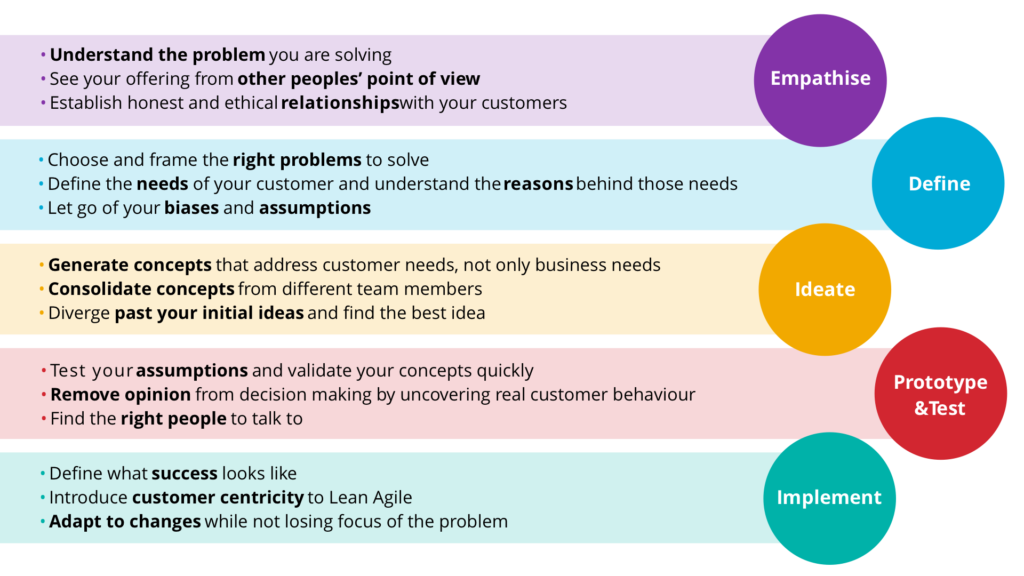Design thinking helps you find and solve the right problem in the right way
Design thinking is a user-centered methodology that brings customers into the problem-solving process. It’s not about sticky notes, markers and whiteboards. It’s about gaining a deep understanding of the people in your target market, their habits, behaviours and motivators; then creating something they want to use.
Design thinking can be used for UX design, service design, healthcare, education… really anything that requires creating something that other people will need to use.
There are many tools in the design thinking toolbox, but they can all be can be grouped into the 5 areas: Empathise, Define, Ideate, Prototype and test, and Implement. These may change slightly depending where you look, but we find this structure to be the most effective.
How Might We specialise in the research parts of the design thinking toolbox, but we have extensive experience in all the areas, so we are able to make our research useful and actionable.

The 5 stages of Design Thinking
Empathise
Seeing the world from another person’s point of view will help you to understand why they do certain things. You are not the user, so get to know your users.
Creating an emotional connection to the people using your products will not only drive the design but focus your target market, give you totally new perspectives on their needs and build consensus within your team about who you are helping and why.
Tools:
- 1-on-1 in-depth interviews
- Diary studies
- Shadowing
- Competitor analysis

We offer all of these
Define
Creating solutions without truly understanding the problem will more than likely create products that no one will use.
In the definition phase, we analyze any data we have about the people involved (customers, staff, service people…) and we formulate actionable problem statements that will ensure we are solving the right problems for the right people.
Tools:
- Personas
- User journey maps
- Ecosystem maps
- “How Might We…” problem statements
- Jobs to be Done

We offer these as optional extras during a UX research project.
Prototype & Test
Make concepts real as soon and as cheaply as possible so you can get real feedback.
Visualise the concepts so stakeholders and customers can have a go at experiencing them. Quickly see what works and what needs to change without having to wait until your product is live.
Tools:
- Prototypes and wireframes
- Story boards
- Service simulations
- Usability testing

We only offer usability testing of existing designs. But we can help you with suggestions and recommendations.
Implement
Create a Minimum Viable Product (MVP) and learn what the market will do. See if people are willing to use your product or feature, and are willing to pay for it. Use analytics to measure success and experiment with other options.
Tools:
- MVPs and MVP experiments
- Graphic design
- Impact mapping and prioritisation
- Customer centric product management
- DevOps
- UX-led Agile
- Data-lead design

We do not offer any of these, but we can help with guidance and input.
When to use design thinking
